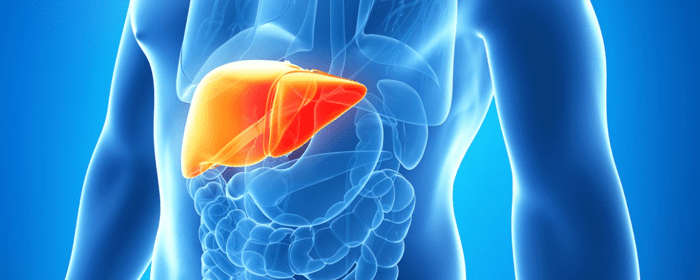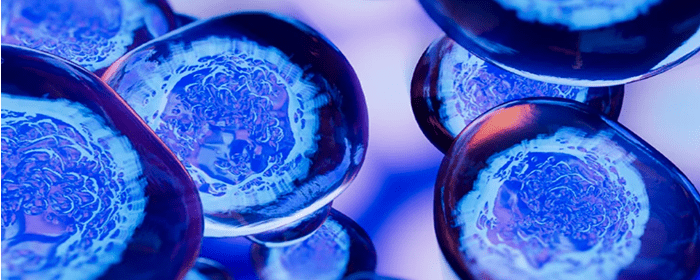
by Stemedix | Sep 25, 2023 | Stroke
The Centers for Disease Control and Prevention states that as many as 795,000 people in the United States suffer a stroke each year. A stroke is a serious condition that can range in severity but that requires some patience throughout the recovery process. Learn more about what a stroke is and the recovery tips that can help you improve faster.
What Is a Stroke?
You can think of a stroke as the brain’s equivalent of a heart attack. It occurs when a part of your brain doesn’t receive enough blood flow, either because you have a blocked artery or because you were bleeding into your brain. If something blocks blood flow to your brain, the organ doesn’t receive the oxygen it needs.
Anyone can have a stroke, including children. That said, you may have a higher risk than others if you are older than 65 or if you have high blood pressure, Type 2 diabetes, high cholesterol, or irregular heart rhythms.
The warning signs of a stroke are:
- Slurred speech
- Sudden vision loss in one or both eyes
- Loss of balance
- Drooping smile
- Muscle weakness on one side of the body
- Confusion
Most strokes are ischemic, which means that blood clots have blocked the blood vessels to the brain. Plaque can also cause such a blockage. Hemorrhagic strokes occur when an artery in the brain breaks open or leaks blood into the brain. This blood puts a lot of pressure on brain cells.
Stroke Recovery Tips
If you’ve suffered a stroke, take the time to make the necessary changes to your lifestyle so that you can recover faster and perhaps even prevent future strokes.
Rest When Your Body Asks for It
The stroke and the recovery process both put a lot of stress on your body, and you need to listen to what it tells you. If fatigue becomes overwhelming, allow yourself to rest. As you recover, your brain needs sleep. Sleep helps improve movement recovery after a stroke, making it as vital as your rehabilitation exercises.
Good Nutrition Is Key
Your body needs all the right nutrients to heal more efficiently. This means sticking to a diet that is rich in vegetables, fruits, lean proteins, and whole grains. Some vitamins are also essential for stroke recovery, including vitamin D, which you get from the sun but also from egg yolks, fatty fish, and cheese.
Vitamin B3, present in turkey, salmon, and chicken, is also crucial because it helps with neuroplasticity. Another excellent option is vitamin B12 because it can boost the function of nerve and brain cells. Eggs, poultry, and milk are also great sources. And If cholesterol is a concern, fish is a better option.
An additional vitamin to consider adding to your diet is vitamin C. You can find it in citrus fruits, as well as broccoli and bell peppers.
If you have dietary restrictions, consult your doctor about whether taking vitamin supplements is a good option for you. As you recover from a stroke, avoid alcohol and an excess amount of sugary foods and drinks, as well as foods rich in saturated fat.
Use the Affected Side of Your Body
Your brain focuses on efficiency. If you don’t use an affected limb or entire side of your body, your brain forgets how. For instance, if you spend days not using your right hand, it will assume it’s not an important part of the body and de-prioritize it.
As you recover, all movement is important. Even if you don’t fully control the limb or if you experience paralysis after the stroke, you can help by moving that part of your body with your hands.
Schedule Regular Visits to Your Doctor
Your doctor is one of your most powerful allies as you start healing from a stroke. They will be able to guide you through all of the stages of your recovery, offering advice and reassurance. They have experience treating strokes and can give you the right perspective on how your recovery is going. Speaking often and honestly with them is key.
Don’t Get Discouraged
Progress after a stroke tends to be slow, which can be discouraging. You may not see the kinds of huge improvements you may have expected, but that doesn’t mean that you aren’t improving at all.
One of the toughest moments in the stroke recovery process is the “plateau” that occurs after about three months. You may notice that recovery is slowing down. It doesn’t have to stop, however, if you continue with your rehabilitation programs.
To rewire itself, your brain needs constant stimulation. Speak with your doctor about finding the right therapies to perform at home so that you can continue making progress even after months after experiencing the stroke.
Communicate What You Feel
Another important aspect of recovering from a stroke is healing emotionally. Going through a serious issue like a stroke leaves you feeling vulnerable or like you’re alone with your worries.
Communicate with your loved ones and let them know what you’re feeling. If that’s not an option, reach out to support groups. Support groups allow you to meet others who have gone through similar situations and who have a good understanding of the challenges you face. For some people, turning to a therapist can be helpful, too.
Stay Active
Physical activity, even simply walking around a room, helps minimize high blood pressure. This means it can also assist in preventing future strokes. Exercise additionally boosts your mood by releasing endorphins.
Ask your doctor what exercise options are suitable for your needs. Never begin a regimen without the recommendation of your doctor.
Managing Life After a Stroke
Lingering stroke symptoms can be frustrating. They may leave you thinking that there’s nothing you can really do about them. That’s not necessarily true. Lately, the field of regenerative medicine has been turning to stem cell therapy options to help people manage better after a stroke.
Regenerative medicine, also known as stem cell therapy, has the potential to replace damaged brain cells and restore some lost functions for post-stroke patients. MSCs (Mesenchymal Stem Cells) can potentially help post-stroke by reducing inflammation, promoting neuroprotection, and stimulating tissue repair in the damaged brain.
As with every treatment you’re considering, speak with your doctor to find out whether it might be a good choice for your needs.
by Stemedix | Sep 21, 2023
Women’s Health as They Age As women age, they undergo a series of physiological, hormonal, and psychological changes. Menopause, typically occurring between 45 and 55, brings about the cessation of menstrual periods and can entail symptoms like hot flashes and mood...
by Stemedix | Sep 21, 2023
Men’s Health as They Age As men age, they typically experience a decline in testosterone levels, leading to reduced muscle mass, bone density, and changes in mood and sexual function. Muscle strength decreases, bone health can deteriorate, and metabolism slows down,...

by admin | Sep 13, 2023 | Mesenchymal Stem Cells, Regenerative Medicine, Stem Cell Research, Stem Cell Therapy
Liver disease accounts for nearly two million deaths annually and is responsible for 4% of all deaths (1 out of every 25 deaths worldwide); approximately two-thirds of all liver-related deaths occur in men.
Most forms of chronic liver disease result from viral infections, alcohol abuse, or metabolic disorders and eventually result in cirrhosis and liver failure. The only effective treatment for end-stage cirrhosis is liver transplantation. Unfortunately, considering organ shortages and the high cost associated with this type of medical procedure, liver transplants are not available in many countries.
Stem cell transplantation, specifically transplantation using mesenchymal stem cells (MSCs), has been increasingly used as a potential treatment strategy for a host of diseases, including for treating chronic liver disease.
As part of this review, Kang et al. discuss the therapeutic effects of MSCs in liver diseases to address questions regarding their efficacy and safety, evaluate recent advances in this area, and consider the potential risks and challenges in the use of MSC-based therapies for liver disease.
When considering the therapeutic effects of MSC therapy in chronic liver disease, the authors conclude that this treatment has shown to be effective, primarily due to their immunomodulation, differentiation, and antifibrotic properties exhibited by MSCs. The authors also point out that although the safety and therapeutic effects of MSC therapy have been observed in several clinical studies, to date the therapy has demonstrated only modest improvements in treating liver disease. Kang et al. attribute this modest improvement, in part, to the current limited feasibility of transplanted cells.
The authors provide a detailed review of the strategies that have been utilized to improve the effects of MSC transplantation, including tissue engineering, preconditioning, genetic engineering, and using extracellular vesicles as cell-free therapy, and summarize the future potential of each of these as ways to improve MSC transplantation.
Kang et al. also highlight several problems that must be considered and addressed before MSCs are fully accepted as clinical therapeutic treatment options for chronic liver disease; these problems include the potential for carcinogenesis and viral transmission. For example, previous animal studies have demonstrated a relationship between the development of sarcoma and the number of passages. While this has not been directly observed in clinical trials involving human MSCs, the follow-up period was too short to allow for observed evidence of this development. As a result, the authors call for a detailed study into the chromosomal integrity before MSC transplantation to ensure the safety of the procedure.
In addition to the potential for tumor cell growth, allotransplantation of MSC cells may involve the risk of viral transmission to the patients. As a result, the authors indicate that both MSC recipients and donors may need to be screened for the presence of specific viruses, including parvovirus B19, herpes simplex virus, and cytomegalovirus.
The authors conclude that the prospects of MSC-based cell therapy for treating chronic liver disease will be determined by standardizing the cell source, culture conditions, administration route, and the outcomes of future large-scale clinical trials.
Source: “Mesenchymal Stem Cells for the Treatment of Liver Disease – NCBI.” https://www.ncbi.nlm.nih.gov/pmc/articles/PMC7234888/.

by admin | Sep 6, 2023 | Multiple Sclerosis, Mesenchymal Stem Cells, Regenerative Medicine, Stem Cell Research, Stem Cell Therapy
Multiple sclerosis (MS) is a progressive auto-immune disease that affects the central nervous system (CNS). Currently, it is estimated that nearly 2 million people worldwide are affected by MS.
Characterized by the body attacking the myelin (the protective sheath that covers the nerve fibers), MS causes communication issues between the brain and the rest of the body. As the nerves continue to deteriorate, the condition can cause permanent damage.
Currently, there is no pharmaceutical treatment for MS, only medications that treat the symptoms of the condition.
In the field of regenerative medicine, mesenchymal stem cells (MSCs) have emerged as a candidate that could potentially treat a number of diseases, including MS. Specifically, MSCs have anti-inflammatory effects and have demonstrated the ability to differentiate in order to target the overactivity and self-antigen attacks observed in the development and progression of MS.
As part of this review, Alanazi et al. reviewed a number of clinical trials that have utilized MSCs isolated from a variety of sources, including peripheral blood, bone marrow (BM-MSCs), adipose tissue (AD-MSCs), umbilical cord (UCMSCs), and the placenta, in order to better understand their potential as a treatment option for MS.
An analysis of these clinical trials led the authors of this review to the consensus that MSCs appear effective in inhibiting CD4+ and CD8+ T cell activation, T regulatory cells, and macrophage switch into the auto-immune phenotype.
Further analysis of the specific MSCs used to treat MS by Alanazi et al. indicates that while BM-MSCs, AD-MSCs, and UCMSCs all demonstrate beneficial effects when applied to the treatment of MS, UCMSCs appear to be the best option.
According to the authors, UCMSCs demonstrate faster self-renewal than other MSCs, are able to differentiate into three germ layers, and can accumulate in damaged tissue or inflamed areas. Additionally, UCMSCs are also among the easiest MSCs to source, demonstrate a high concentration of MSCs, are safe and inexpensive, and are not associated with ethical issues.
Based on the information reviewed, Alanazi et al. recommend emphasizing the clinical utility of UCMSCs for regenerative medicine and immunotherapy, including for the treatment of MS.
Source: “Mesenchymal stem cell therapy: A review of clinical trials for multiple ….” 23 Aug. 2022, https://www.ncbi.nlm.nih.gov/pmc/articles/PMC9420954/.




 St. Petersburg, Florida
St. Petersburg, Florida
